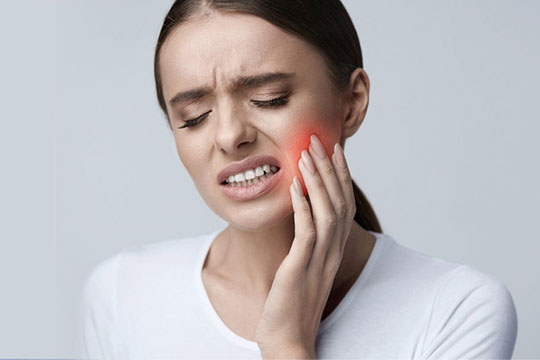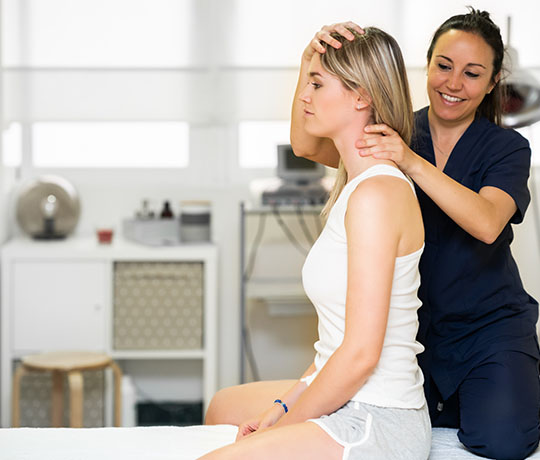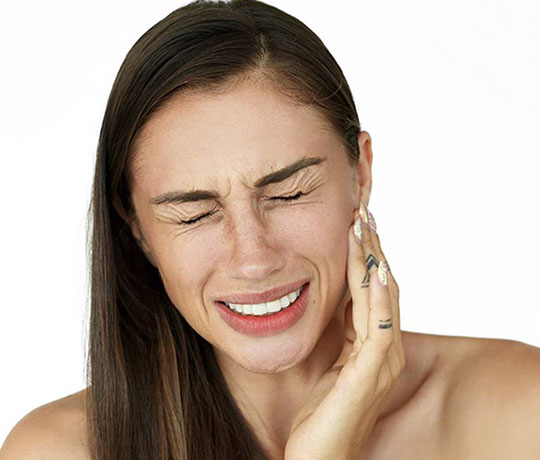Temporomandibular Joint Dysfunction (Jaw Pain) – TMD
What is the Temporomandibular Joint?
The Temporomandibular Joint (or TMJ) is the joint that connects the skull with the jaw. The TMJ is a complex joint that is connected by muscles inside and outside the jaw.
What is Temporomandibular Disorder? TMD
TMD describes a variety of conditions that affect jaw muscles, temporomandibular joints, and nerves. TMD can be associated with chronic facial pain. Symptoms may occur on one or both sides of the face, head or jaw, or develop after an injury. TMD affects more than twice as many women than men and is the most common non-dental related chronic oro facial pain disorder.
What causes TMD?
Normal function for the TMJ includes chewing, swallowing, yawning and talking. Certain tasks, either mental or physical, cause or aggravate TMD, such as strenuous physical tasks or stressful situations. Most discomfort is caused from overuse of the muscles, specifically clenching or grinding teeth (bruxism).
These excessive habits tire the jaw muscles and lead to problems, such as headaches or neck pain. Additionally, abnormal function can lead to worn or sensitive teeth, traumatized soft tissues, muscle soreness, jaw discomfort when eating, and temporal (side) headaches.
What TMD symptoms can I experience?
- The muscles which control the jaw can refer pain to the head, face and upper neck.
- Headaches can be caused by TMD, especially in and around the ear, eye, sides and front of head.
- An earache without an infection.
- Jaw pain or soreness more prevalent in the morning or late afternoon.
- Jaw pain when you chew, bite or yawn.
- Clicking when opening and closing your mouth.
- Difficulty opening and closing your mouth.
- Locked or stiff jaw when you talk, yawn or eat.
- Sensitive teeth when no dental problems can be found.
What can I do to treat TMD?
A thorough assessment of the temporo-mandibular joint and related areas by an experienced Chiropractor is indicated for those with symptoms of TMD. Both intra and extra-oral assessment is required to thoroughly assess the TMJ.
The various treatment options available are:
Chiropractic: Many TMJ symptoms are caused by tension and imbalances in the muscles which control the jaw. Chiropractors are trained at identifying these imbalances and correcting them. Common techniques include intra and extra-oral trigger point release and massage and adjustment to the TMJ and cervical spine.
Self care: Home exercise programs are aimed at assisting recovery. A home exercise program commonly includes stretches for tight structures, self massage techniques and heat/cold application as directed by your Chiropractic. Other self care tips can include resting your jaw. Rest relaxes your jaw muscles and takes the pressure off your joint. Practicing good posture, eating soft foods, avoiding chewing gum and reducing stress will also relax tense muscles.
Stress Management: Stress, teeth clenching and poor posture cause your muscles to tighten up. This tightening pulls your upper and lower jaws closer together, putting pressure on the TMJ and sometimes wearing down your teeth. Managing daily stress is one of the best ways to restore harmony between your muscles and joints.
Occlusal Splint: A clear plastic appliance that fits over your top or bottom teeth and may be recommended by your doctor to establish harmony between your muscles and joints. It works by keeping your upper and lower teeth slightly apart, thus relaxing the muscles and reducing the pain. A splint can also change jaw posture, enough to stabilize some bite problems and reduce pressure in your joints. It may not be easy to get used to wearing and caring for your splint, but it is an important treatment that may last for 3 months or more.
Bite Correction: If your TMJ disorder has caused problems with how your teeth fit together, you may need treatment to correct your bite, although this is seldom necessary. Bite problems may be corrected either by orthodontic wiring, or by placing a crown or filling onto your teeth. Essendon Chiropractic can refer you to occlusion specialists. You may need a combination of treatments, depending on the severity of your case as decided by your Chiropractor.



